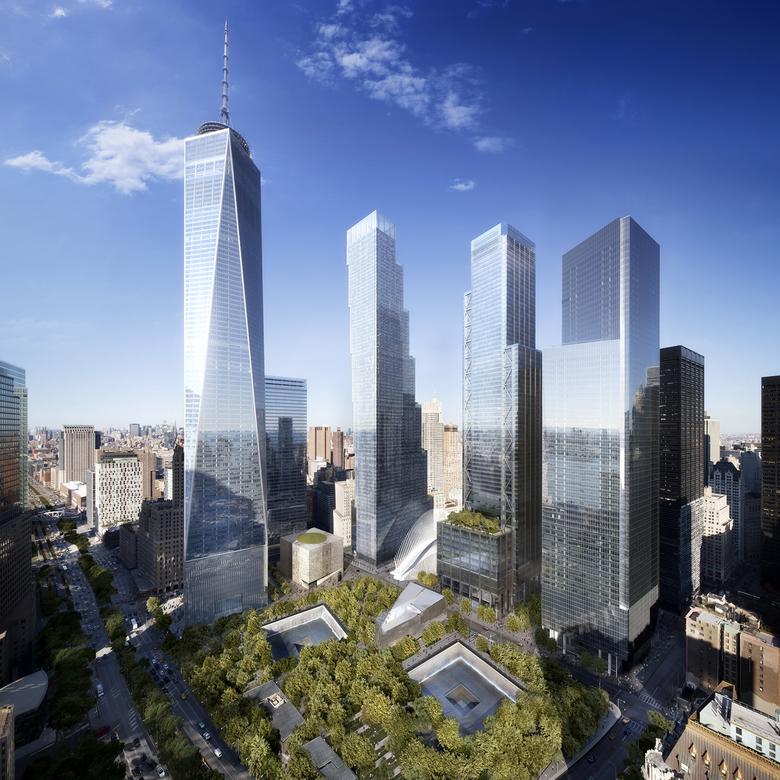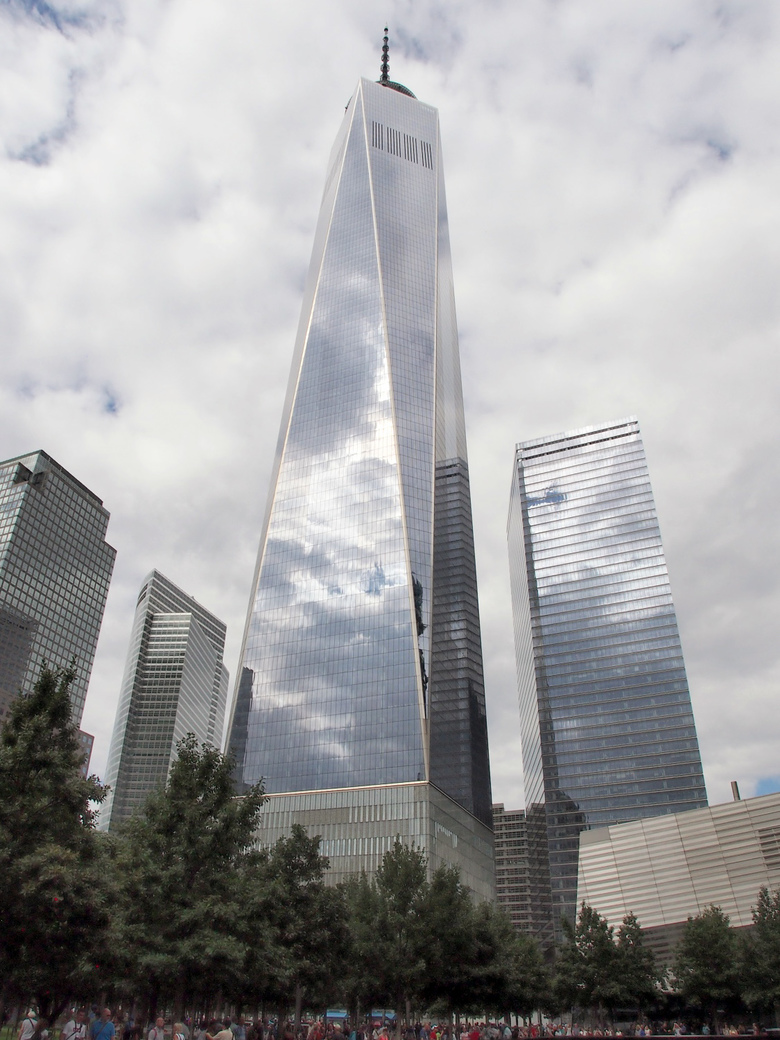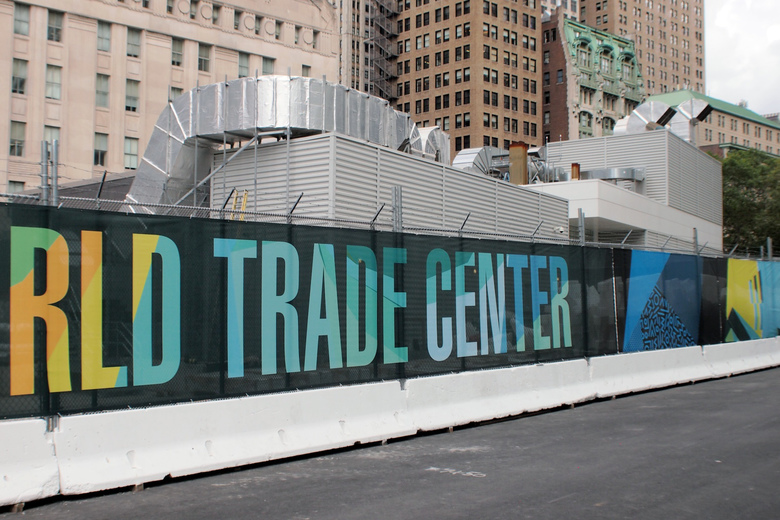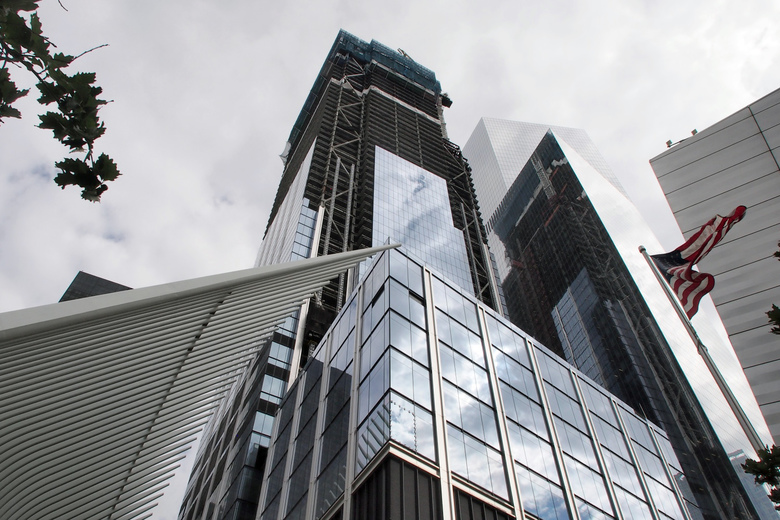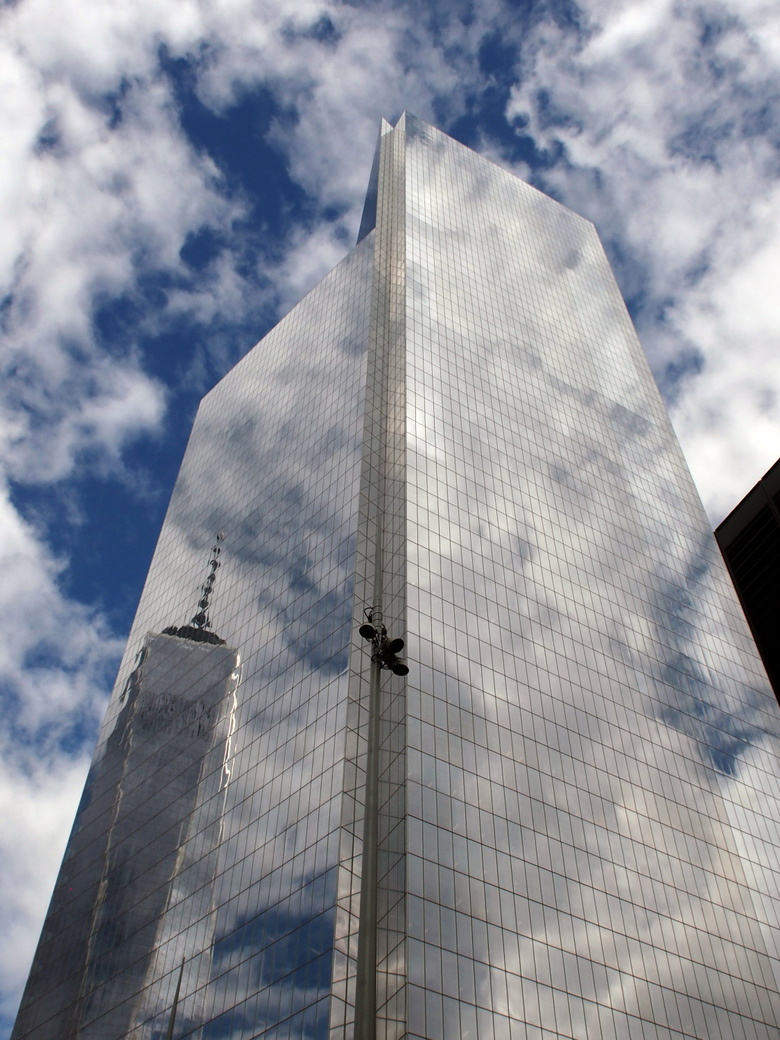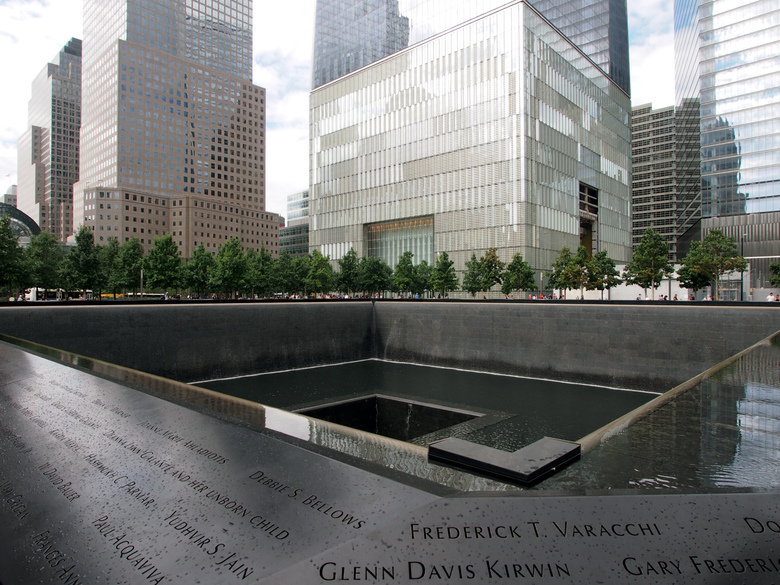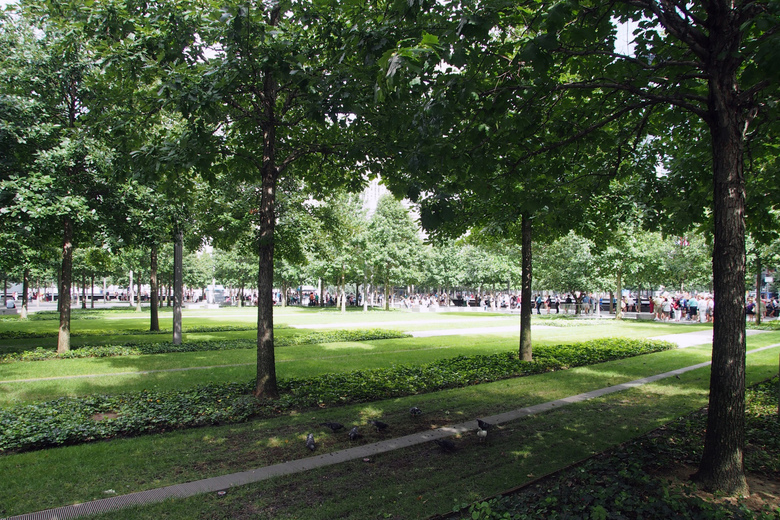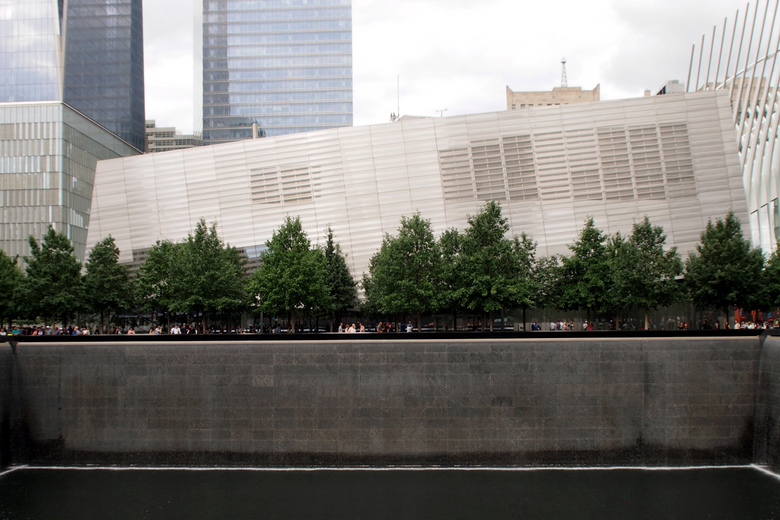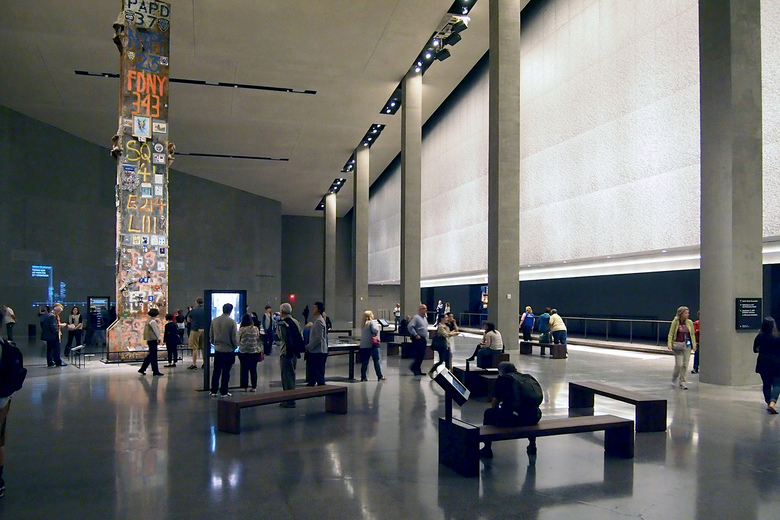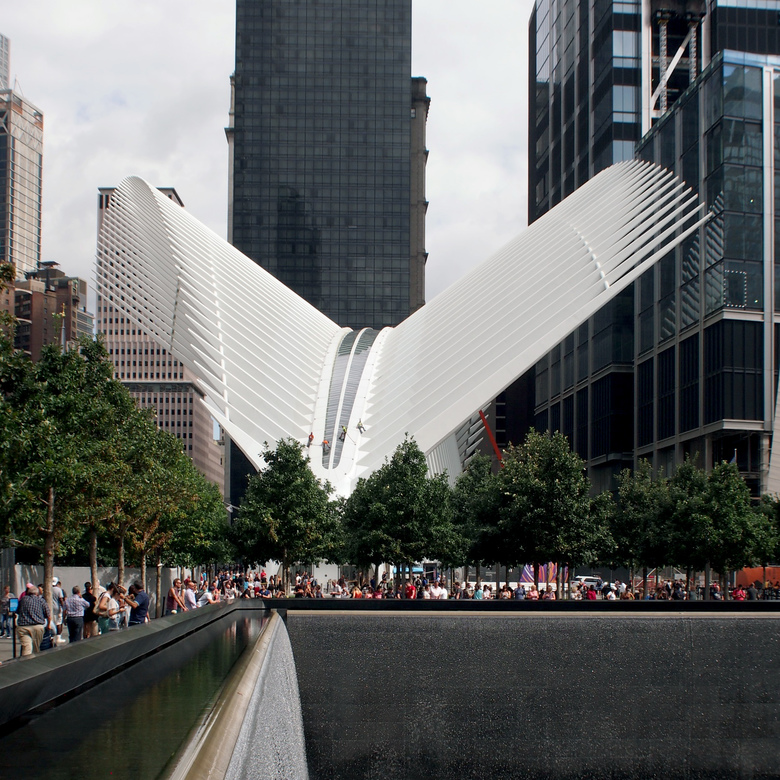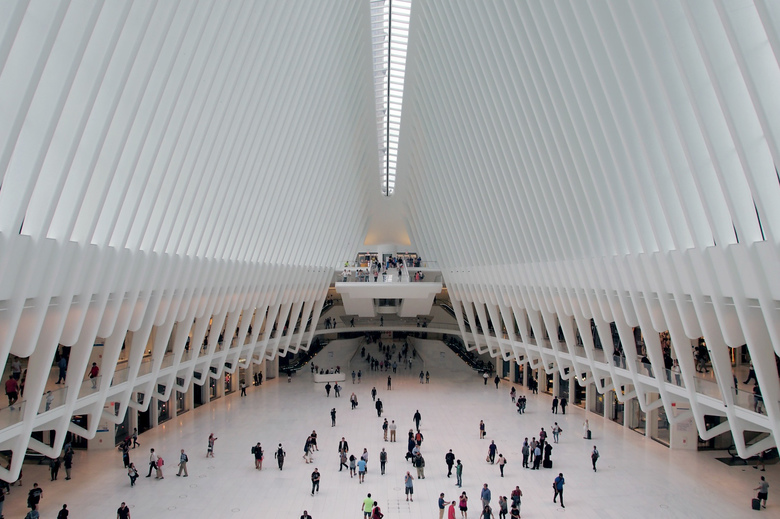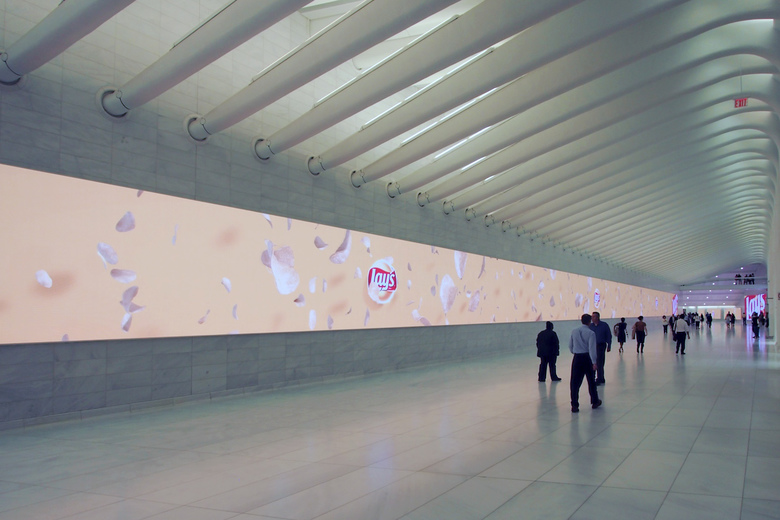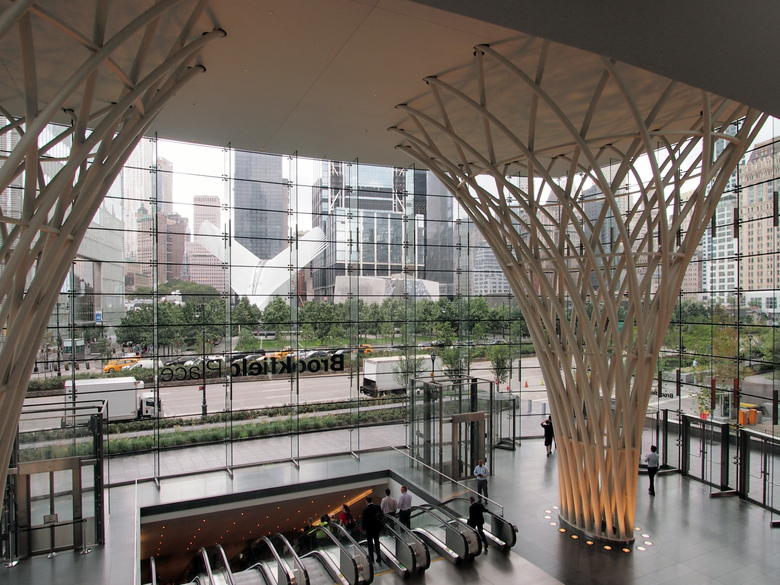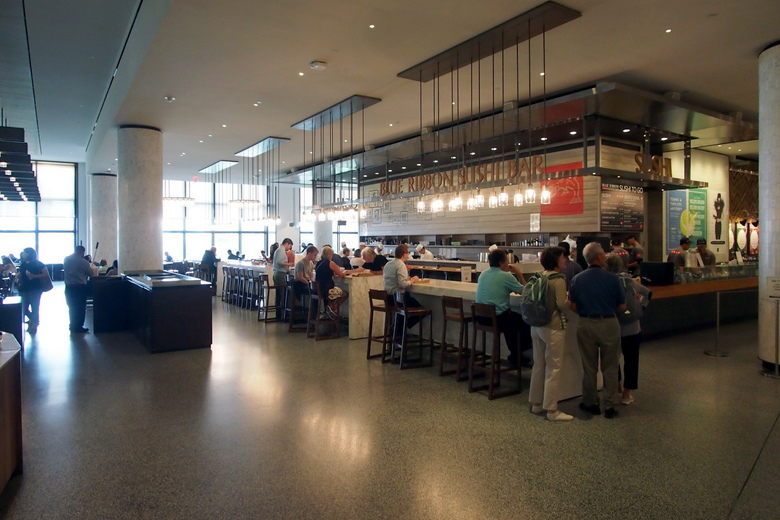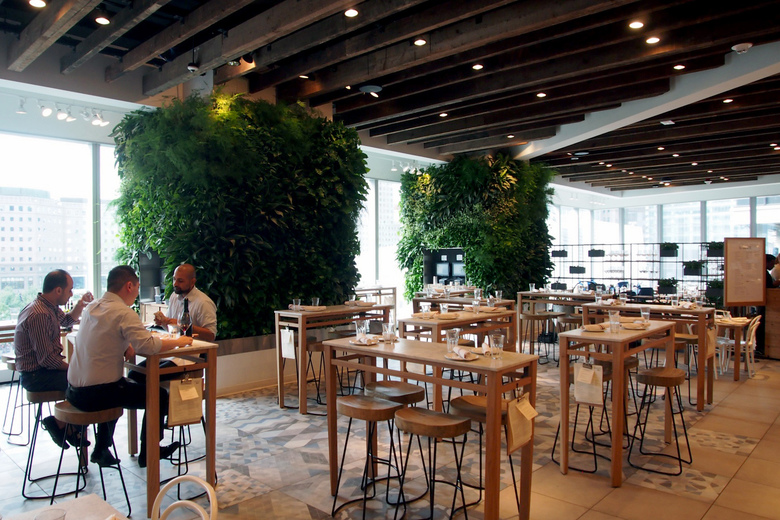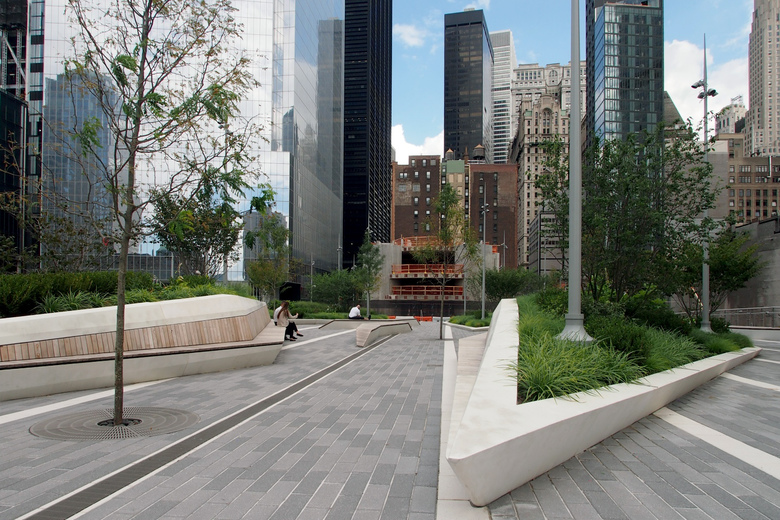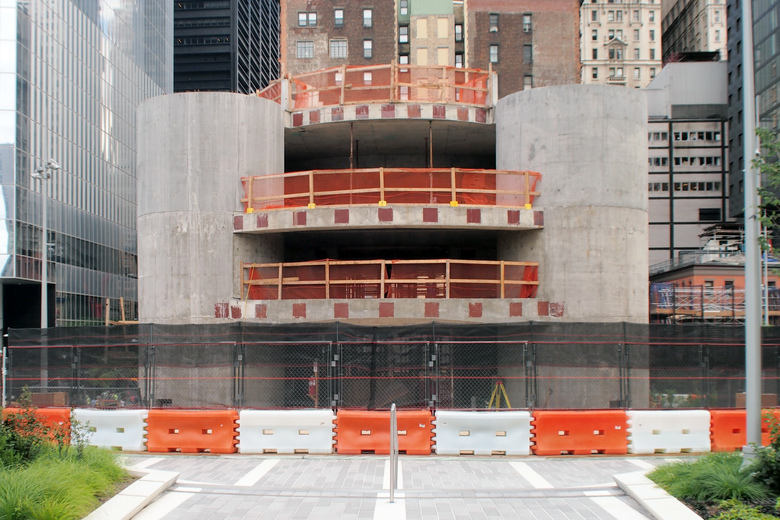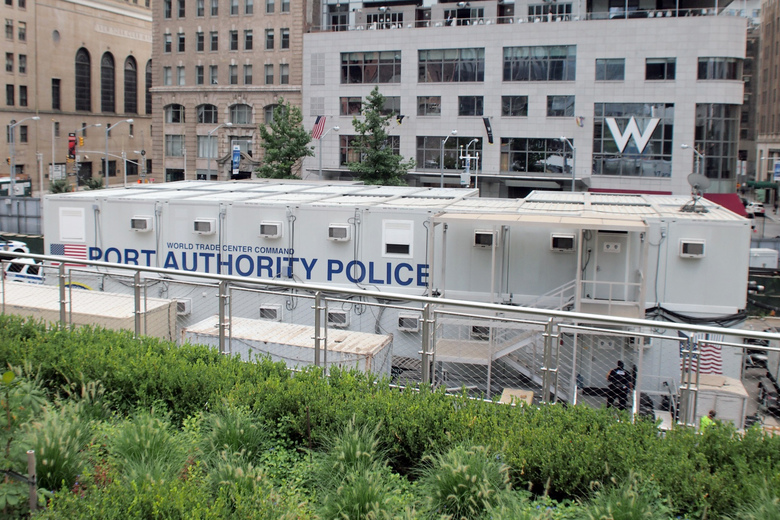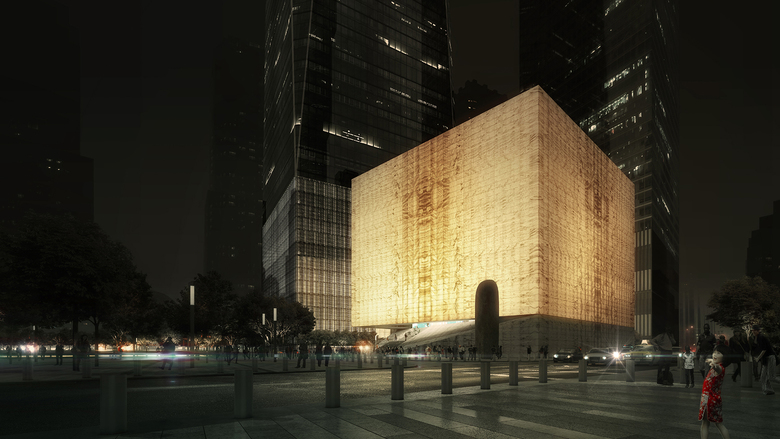WTC at 15
John Hill
9. 九月 2016
The most recent rendering of the WTC site shows the four office towers, the memorial, the museum, the transportation hub, and the just unveiled PAC. (Rendering: DBOX)
Sunday marks the 15th anniversary of the terrorist attacks on the World Trade Center in New York City. To track progress on the rebuilding efforts, we present 15 pieces – built and in-progress – on the 16-acre site.
Rebuilding efforts starting in 2003 with Daniel Libeskind's competition-winning master plan for the World Trade Center site. Although progress was slow for many years, the mix of office towers, retail spaces, transporation infrastructure, museum and memorial are congealing into something approaching the master plan. And with yesterday's unveiling of the Perelman Performing Arts Center, the last design piece is no longer a mystery. So, from One World Trade Center to the Perelman PAC, here are fifteen pieces of the ongoing WTC puzzle.
1 - One World Trade Center: The 104-story tower (the tallest of the four planned towers) designed by Skidmore, Owings & Merrill officially opened in November 2014. The Port Authority of New York & New Jersey, which owns the $3.8 billion building, is now looking to sell it to the highest bidder. (Photo: John Hill/World-Architects)
2 - Two World Trade Center: Bjarke Ingels nabbed 2WTC from Norman Foster last year when FOX and News Corp entered the picture. But then the anchor tenants pulled out, putting a question mark over the 81-story tower's terraced design and completion date. Here's the site's current condition. (Photo: John Hill/World-Architects)
3 - 3 World Trade Center: This 80-story tower designed by Richard Rogers is expected to be complete in 2018. The concrete core topped out in June of this year and the perimeter steel framing isn't far behind. It is a rarity in New York City, where the steel trades typically do their work before concrete. (Photo: John Hill/World-Architects)
4 - 4 World Trade Center: This 72-story tower designed by Fumihiko Maki was the first of the four towers completed, opening for business in November 2013. A hefty structure with cantilevers translates to column-free corners, a fact concealed by the highly reflective glass. Here it offers a glimpse of 1WTC across the site. (Photo: John Hill/World-Architects)
5 - National September 11 Memorial: Michael Arad, now with Handel Architects, beat out 5,200 entrants to win the competition for the memorial with his scheme "Reflecting Absence." The simple design is of two large pools in the location of the Twin Towers. The memorial opened on the 10th anniversary of the attacks and is consistently crowded. (Photo: John Hill/World-Architects)
5 - National September 11 Memorial: After Arad won the competition, he was joined by landscape architect Peter Walker for the plaza around the memorial pools. The canopy of the oak tree "forest" has filled in considerably, an intimate counterpoint to the pools. Unfortunately, many areas, like here, are off limits. (Photo: John Hill/World-Architects)
6 - National September 11 Museum: The museum, which opened to the public in 2014, is made up of two components designed by different architects. Above ground is the entrance pavilion designed by Snøhetta. With its tapered form and angled stainless steel panels, it is the one element on the WTC site that most resembles Libeskind's initial master plan. (Photo: John Hill/World-Architects)
6 - National September 11 Museum: Davis Brody Bond was responsible for the below-grade museum, where artifacts from the original World Trade Center sit in the cavernous spaces between the footprints of the Twin Towers. The last is highlighted by illuminated walls of aluminum, seen here. (Photo: John Hill/World-Architects)
7 - PATH Terminal: Santiago Calatrava designed the Port Authority's Transportation Hub, which serves primarily as an entrance to the PATH trains to and from New Jersey. The $4 billion project went way over budget and got drawn out for years, finally opening in March of this year. (Photo: John Hill/World-Architects)
7 - PATH Terminal: The most dramatic space in Calatrava's project – in the whole WTC site, period – is the cathedral-like Oculus below the architect's signature ribs. Retail spaces lining the sides of the space are starting to fill as part of the Westfield World Trade Center mall, with an Apple Store and lots of high-end fashion. (Photo: John Hill/World-Architects)
8 - PATH Concourse: The extent of Calatrava's design extends well beyond the Oculus, including a concourse that connects the WTC site to Battery Park City. A recent addition to the space, which opened partially in 2013, is a long LED screen used for advertising; opposite are more shops. (Photo: John Hill/World-Architects)
9 - Brookfield Place: World Financial Center, rebranded Brookfield Place by Westfield Corporation, sits across the street from the WTC. The Winter Garden was rebuilt soon after the attacks, joined in 2013 by a street-level atrium designed by Pelli Clarke Pelli that links the mall spaces in Battery Park City and on the WTC site. (Photo: John Hill/World-Architects)
10 - Hudson Eats: In the 15 years since 2001, foodie culture has taken New York City by storm, as it has in cities around the world. Food courts have given way to high-end food halls with artisanal foods and diverse cuisines. Westfield inserted its own two-story version into the newly branded Brookfield Place. (Photo: John Hill/World-Architects)
11 - Eataly: The foodie phenomenon is also present on the WTC site proper, where the Italian marketplace Eataly opened its second New York City location. Occupying the third floor of 4WTC, the popular store includes dining areas overlooking the memorial and rest of the WTC site. (Photo: John Hill/World-Architects)
12 - Liberty Park: Lower Manhattan's version of the High Line opened this year at the end of June. Liberty Park occupies a small strip overlooking the WTC site from the south. Designed by Joe Brown, a design advisor to AECOM, the park features tapered planters, trees, and plenty of seating. It is accessible via steps on the east and a bridge from Battery Park City on the west. (Photo: John Hill/World-Architects)
13 - St. Nicholas National Shrine at the World Trade Center: One of Liberty Park's functions is as a forecourt for the replacement of the St. Nicholas Greek Orthodox Church, which was destroyed on 9/11. The small church, designed by Santiago Calatrava, sits at the eastern end of the park and is set to open next year. (Photo: John Hill/World-Architects)
14 - Police and Security: Not surprisingly, the police presence at the World Trade Center is heavy. The same can be said about security, including bollards, cameras and other high-tech apparatuses, both seen and hidden. The command center for the Port Authority police, which jointly polices the WTC site with the NYPD, is located in stacked trailers just south of Liberty Park. (Photo: John Hill/World-Architects)
15 - Ronald O. Perelman Performing Arts Center at the World Trade Center: REX's design for the Perelman PAC was unveiled yesterday, three days before the 15th anniversary of 9/11. Their design comes a dozen years after Frank Gehry was selected to design this WTC component, which was shelved in 2014. A generous donation in June ensures this iteration will happen. (Rendering: LUXIGON)
Related links:
- World Trade Center Master Plan (Libeskind)
- BIG's 2WTC Unveiled
- National September 11 Memorial (Handel Architects)
- National September 11 Memorial & Museum at the World Trade Center (Davis Brody Bond)
- Santiago Calatrava's PATH Station Quietly Opens
- Ronald O. Perelman Performing Arts Center at the World Trade Center (REX)
